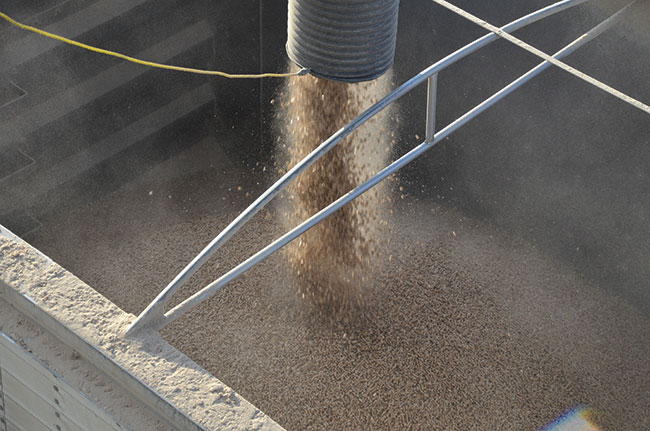
Domestic market checklist
April 29, 2010
By Canadian Biomass
April 29, 2010 – While Canada's pellet industry seems frozen in anticipation of government support, it is in fact likely that launching a vibrant domestic market for wood pellets will take an aggressive and co-ordinated effort.
April 29, 2010 – While Canada's pellet industry seems frozen in anticipation of government support, it is in fact likely that launching a vibrant domestic market for wood pellets will take an aggressive and co-ordinated effort from both levels of government, private investors, pellet manufacturers, and industry advocates like the Wood Pellet Association of Canada. We needn't re-invent the wheel, as the Europeans have done this before us (See a complete pellet roadmap created by the European biomass industry). Still, here is a basic list of what needs to be accomplished if pellets are to become a serious part of Canada's home heating mix.
Financial incentives:
Residential energy incentives are already common in Canada, with bi-energy (Hydro-Oil), solar, and most recently geothermal receiving significant government funding to get the ball rolling. On a recent visit to a geothermal-supplied housing development in southwestern Ontario, Canadian Biomass heard of provincial and federal incentives that approached $10,000 per new home.
That's the kind of money required for pellet-based central heating systems to take off, as the systems are not cheap. McCallum sells two different automated central heating pellet appliances from his PEI base, and says a modern, installed central heating system with bulk storage and automated pellet infeed will set a homeowner back $12,000 to
$16,000 installed.

|
| Central heating with pellets must be as simple for the consumer as oil or natural gas. Home heating clients in Sweden for example never touch their wood pellets, as bulk delivery trucks like this fill storage bins that are automatically fed to their thermostat-controlled boilers. |
Pellet and pellet appliance standards: As a new technology for Canadian homeowners and small businesses, consumers will want assurances that both the fuel and heating systems are reliable, safe, durable, and meet local emission standards. The US-based Pellet Fuels Institute has recently created a voluntary set of quality standards and labels for its pellet-producing members. Such standards will be crucial, especially given the number of new players entering the market. One bad
supplier can ruin the reputation of pellet fuels across an entire region in the same way that the poorly-designed geothermal systems installed in the 80s set that sector back a decade at least. Similar guidelines and labelling systems are required for the appliances as well.
Education and certification of installers: "The systems are for the most part already available," McCallum notes. While he sees some modifications to meet the Canadian preference for hot air furnaces over hot water boilers, the big hurdle he says is creating a network of recognized installers. This is not a new challenge, as both the domestic geothermal sector had to build their network from scratch, and countries like Austria have done the same for wood pellets. One way to drive this forward is to link any government incentives to the use of certified appliances and installers.
Marketing and promotional campaigns: These will be crucial to drive the demand for wood pellet heating from the consumer. As the systems and delivery methods become modernized along European lines, the industry needs to erase the current image of rural customers dragging bags of pellets home.
Government support: Government can set the example by converting public buildings from oil to wood pellets to provide showcases of what can be done. A similar program in Finland has had tremendous success.
Distribution infrastructure: The creation of a modern storage and bulk delivery infrastructure in areas identified as potential core residential pellet heating markets is a key first step. In northern European countries, homeowners heating with pellets face no more work than those heating with oil or gas. A delivery truck rolls up to the curb, attaches a hose to an outlet in the wall, and fills a bulk storage silo in the basement or beside the house. When the thermostat kicks in, an automated infeed system delivers pellets at the rate required. McCallum has attempted a similar system in PEI, albeit with cruder delivery systems tied to the local feed delivery contractors. While better than bags, it was still too inefficient and the crude equipment damaged the pellets. The answer lies in dedicated suppliers, one area where McCallum sees a valid role for government.
"Government could help in establishing bulk storage and delivery infrastructure in areas identified as key potential markets. That would help ease concerns over shortages by creating local buffers like in the petroleum sector, and would help get the ball rolling as small
appliance suppliers can't do that on their own."
Creating incentives for existing energy companies to enter the sector as distribution and bulk delivery partners may also be a possible avenue to establishing the distribution network.
Protecting the homeowner: Industry must create a delivery priority system that favours the homeowner, so that in the event of shortages families do not go cold at the fault of the wood pellet sector. Last winter's perceived and local shortages are an example of what not to do when building a market and consumer confidence.
Finance/insurance: Lobbying of the finance and insurance sectors to accept the recent generation of wood pellet heating systems as the equivalent of gas or oil systems will be important.
For more on ways and means to creating a domestic pellet heating market in Canada, see the feature article in the March/April issue of Canadian Biomass.
Print this page